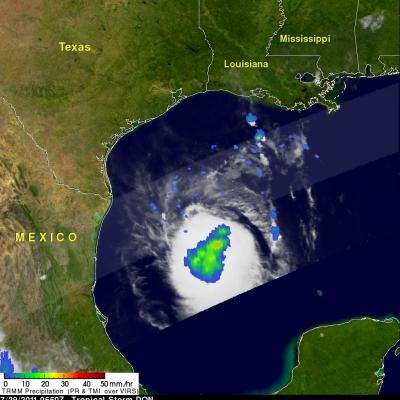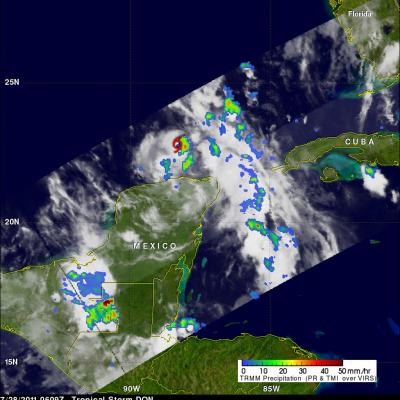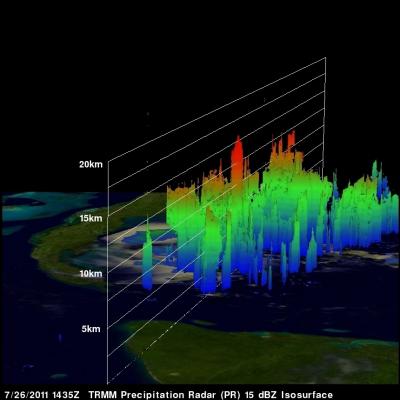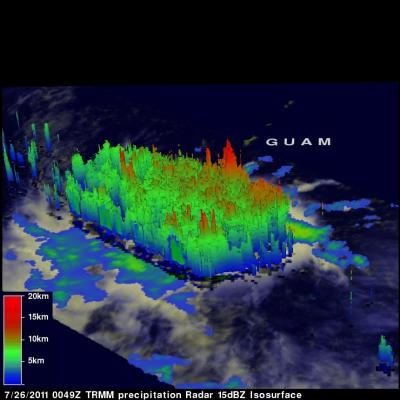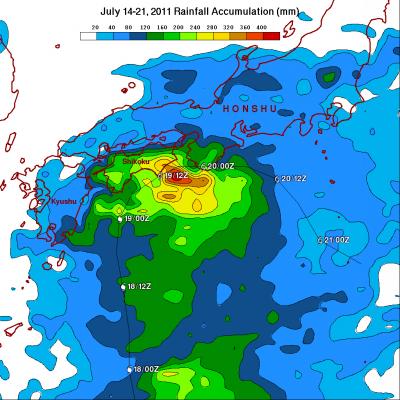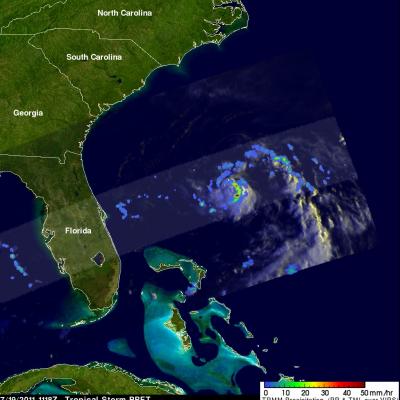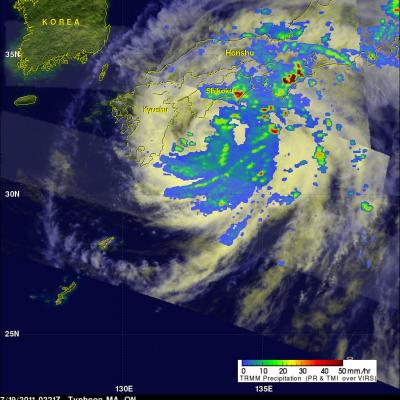TRMM Sees Don At Daybreak
The TRMM satellite again viewed tropical storm DON on 29 July 2011 at 1322 UTC (7:22 AM CDT). A rainfall analysis from TRMM's Microwave Imager (TMI) was overlaid on a sunlit combination visible/infrared image from TRMM's Visible and Infrared Scanner (VIRS) instrument. Below is an animation that fades between the sunlit visible/infrared image and the PR/TMI rainfall analysis.



